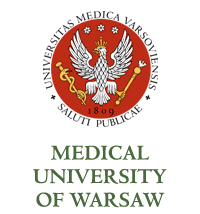You are here
Searching of new compounds with anti-inflammatory activity from Oleaceae family plants growing in Poland conducted using in vitro and in vivo models followed by molecular mechanism determination
Research project objectives/hypothesis
The aim of the project is to find a source of potentially anti-inflammatory agents among members of the Oleaceae family. The well-established traditional use of plants from that family in the treating inflammation-associated diseases, considered parallely with the variety of chemical structures present led to the hypothesis that they could be a rich source of novel anti-inflammatory agents.
To verify this hypothesis research into the phytochemical composition using chromatographic methods with mass spectrometry detection, together with bioactivity guided isolation of the active principles using in vitro neutrophils and macrophages models will be conducted for selected plants. The ability of single compound(s)’ to silence acute inflammatory response, to enhance inflammation resolution will be estimated by determining the levels of pro-inflammatory and anti-inflammatory factors produced by neutrophils and macrophage cells, and the surface expression of the adhesion molecules of neutrophils. The effect on delayed neutrophils apoptosis and their phagocytosis by macrophages will be also determined. The intrinsic characterization of the mechanism of action of single compound(s) will be determined by their influence on selected signaling pathways. For selected the in vivo effect on the status of the immune system in animal model of chronic inflammation caused by hypertension will be tested.
Research methodology
The planned study will be concerned on 32 extracts (water, 60% ethanol, dichloromethane-DCM) obtained from different parts of plants from three genera of Oleaceae family: Fraxinus (1 species), Syringa (1 species) and Forsythia (3 species). The work plan will be divided into two main parts: phytochemical examinations and biological activity determination.
The main task of the phytochemical part of the study will consist of qualitative analysis of obtained extracts and fractions using HPLC-DAD-MS/MS method. The extracts with outstanding bioactivity will be divided into fractions of different polarities. The most active extract(s)/fraction(s) will be subjected to further bioactivity-guided isolation to obtain single active compound(s).
The biological activity examination part will consist of following steps:
- Preliminary selection of the most active extracts on neutrophil and macrophage THP-1 cells models by estimation of inhibition of neutrophils oxidative burst and myeloperoxidase (MPO) release, proteases release (elastase and MMP-9), cytokines release (IL-8 and IL1β) and by establishing influence on pro-inflammatory (IL-6 and TNF-α) and anti-inflammatory (TGF-β, IL-10, MMP-12) factors production by THP-1 cells together with determination of influence on efferocytosis.
- For selected outstanding extracts/fractions, the activity will be investigated at a wider concentration range. Additionally, the surface expression of adhesive molecules, effect on delayed apoptosis will be performed on neutrophil model. More intrinsic studies of influence on anti-inflammatory response (TGF-β, MMP-12), efferocytosis and phagocytosis on THP-1 cells will be conducted.
- For the bioactivity-guided fractionation and isolation of active principles the most influenced and/or feasible biological target will be employed
- Isolated single active compounds will be comprehensively analyzed at concentration range 1-50 μM on other above-mentioned models indicating selective influence on one target or revealing pleiotropic effect. The mechanism of action will be elucidated by determination the influence on NFκB, JAK/STAT, MAPK/ERK and IP3 pathways and selected cytokines expression by determination of specific mRNA (RT-PCR, qRT-PCR).
- For selected (1-3 compounds) the in vivo effect on the status of the immune system in animal model of chronic inflammation caused by hypertension will be tested.
Research project impact
Agents that target pro-inflammatory mediators have dominated drug research for inflammatory diseases for the last decades. Current anti-inflammatory therapies control major signs of inflammation, mostly by inhibition specific pathways that are involved when acute inflammation occurs. Concerning recent data about the great importance of resolution of inflammation, apart from research of active compounds silencing acute inflammatory response, inflammation resolution enhancement should also be targeted as a promising therapeutic approach.
The implications of the results will be significant in the area of pharmacognosy and pharmacy. Moreover, considering the huge concern of Polish and other European communities.

